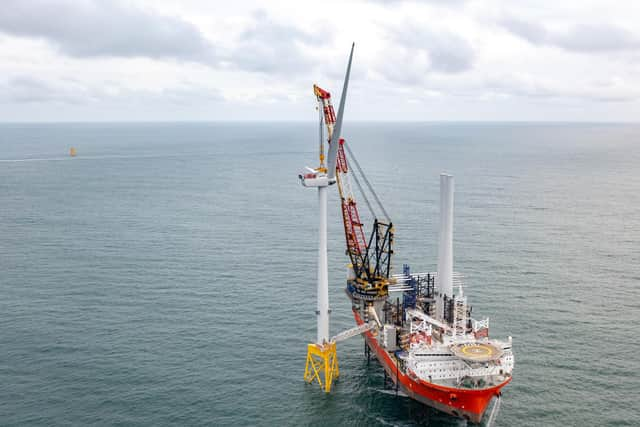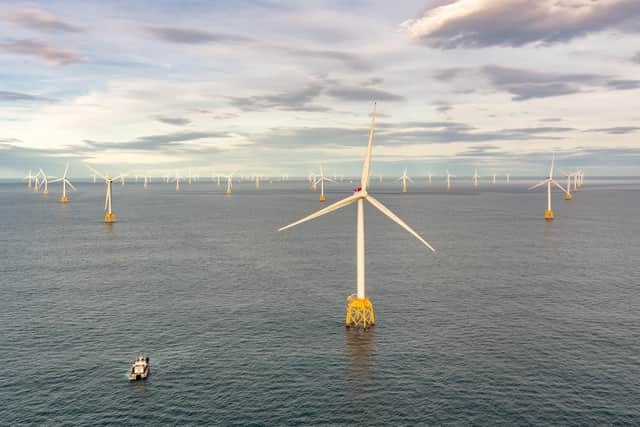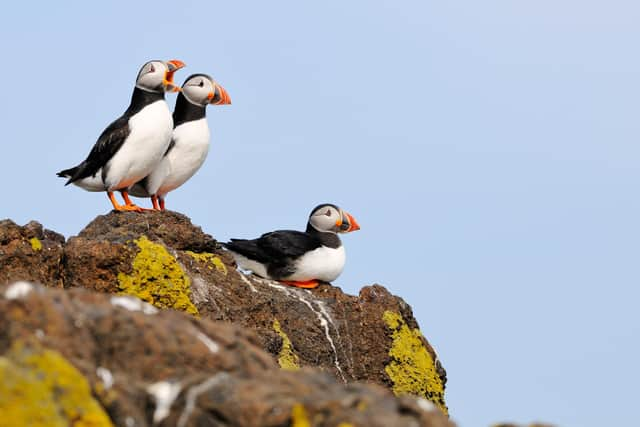'We can’t just build lots of wind farms and forget about seabirds': Why the future of offshore wind must address climate and nature crises
Ministers have set out an aim to create 11GW of new offshore wind in Scottish waters by 2030 to help end use of fossil fuels and cut greenhouse gas emissions.
So far there is 892MW of operational projects, 4.9GW consented and 4.4GW in the pipeline.
Advertisement
Hide AdAdvertisement
Hide AdA further 25GW could come onstream through the new ScotWind initiative, with more expected in future.


But whether or not these proposals go ahead will depend heavily on their environmental impact, according to the energy firm hoping to build a 300-turbine scheme in the North Sea that will be the UK’s largest.
Scotland is internationally important for seabirds, with more than five million breeding here each year.
However, many populations are in long-term decline – numbers of 11 key species have dropped to half their 1986 levels.


Several factors have been blamed, including climate change, competition from fishing fleets, invasive species at nesting grounds, plastic pollution, oil spills and off-shore wind farms.
SSE Renewables is proposing to build a 4.1GW scheme in the outer Forth, around 25 miles off the East Lothian coast.
Named Berwick Bank, it will have capacity to power around five million homes – more than twice the number of households in Scotland.
It is predicted to generate billions of pounds in investment, create lots of new jobs and help establish important infrastructure for the Scottish industry to fully take off.


Advertisement
Hide AdAdvertisement
Hide AdBut the area is an important nesting and feeding ground for some of Scotland’s most vulnerable seabirds, including puffins, guillemots and kittiwakes.
Berwick Bank project director Alex Meredith stresses the importance of renewable energy in the battle against climate change and to create a resilient energy supply that doesn’t rely on oil and gas.
However, he says there needs to be “balance” and projects should address both the climate emergency and the nature crisis.


And a national strategy reflecting this should be created to simplify planning consent or else future expansion of offshore wind could stall.
“We can’t just build lots of wind farms and forget about seabirds,” he said.
“Scotland has amazing benefits for delivery of offshore wind projects and Berwick Bank is a huge opportunity for Scotland to show itself to be a leader in offshore wind.
“But there are challenges on the environmental front.
“We need to address those challenges with strategic solutions to help the climate and nature at the same time.
“We don’t see it as a trade-off.
“It’s not a zero-sum game.
“If we don’t have solutions we cannot deliver offshore wind.”
Advertisement
Hide AdAdvertisement
Hide AdSSE has adjusted designs for Berwick Bank to cut the risk of seabird collisions and displacement from foraging grounds, including raising turbine height to increase clearance above sea level to allow passage through the site and widening the space between it and neighbouring schemes.
The firm is also proposing a ban on fishing for sandeels, a crucial prey for several seabird species, to help declining stocks recover.
RSPB Scotland, which in 2015 fought – and eventually lost – a court battle to stop four other offshore wind farms in the Forth and Tay over fears of their impact on seabirds, has backed calls for offshore developers to compensate for adverse impacts on ecosystems.
Catherine Kelham, senior marine conservation planner for the nature charity, said: “RSPB Scotland recognises that offshore wind can make a significant contribution to addressing climate change – one of the greatest threats to wildlife and people – and supports offshore wind in the right places, with space for nature.
“However, our seas are already struggling and in the race to reach net zero our seabirds may be lost forever unless we do things differently.
“In the midst of nature and climate emergencies, we need actions that deliver for wildlife and for net zero – not deepening one at the expense of the other.
“The energy industry alone cannot reconcile this challenge.
“Given the scale of ambition in Scotland we must find solutions that work at scale.
“The impacts from multiple wind farms in already degraded seas means we need system change, action that addresses the root cause of seabird declines, including ensuring enough food for our puffins, kittiwakes, fulmars, skuas and all the other wonderful diversity of marine birds for which Scotland is globally important.”
Advertisement
Hide AdAdvertisement
Hide AdHowever, Scottish fishing fleets have hit out at the proposal to suspend sandeel catches in the area – which comes following a recommendation from the International Council for the Exploration of the Sea that no fishing for the species should take place there this year to compensate for high catches in 2021.Elspeth Macdonald, chief executive of the Scottish Fishermen's Federation, said: "It is an inescapable fact that offshore wind farms kill seabirds.
"Both the Scottish Government and offshore renewables industry have to recognise that the planned huge expansion of offshore wind in Scottish waters will likely kill many, as well as creating significant spatial pressures for other users of the sea, and particularly for fishing.
"In addition, the risks posed by electro-magnetic fields from wind farms on all marine species and marine ecosystems are poorly understood.
"Offshore wind developers need to focus more effort on understanding and mitigating their impact before shifting the responsibility onto another sector.
"For the offshore wind companies to attempt to offset the damage they will cause to seabirds with measures that impact on another industry cannot possibly be part of a just transition.”
A planning application is due to be submitted to the Scottish Government, with construction expected to start in 2024 and the first turbines to be powered up by the end of 2026 if permission is granted.
A message from the Editor:
Thank you for reading this article. We’re more reliant on your support than ever as the shift in consumer habits brought about by coronavirus impacts our advertisers.
If you haven’t already, please consider supporting our trusted, fact-checked journalism by taking out a digital subscription.
Comments
Want to join the conversation? Please or to comment on this article.
